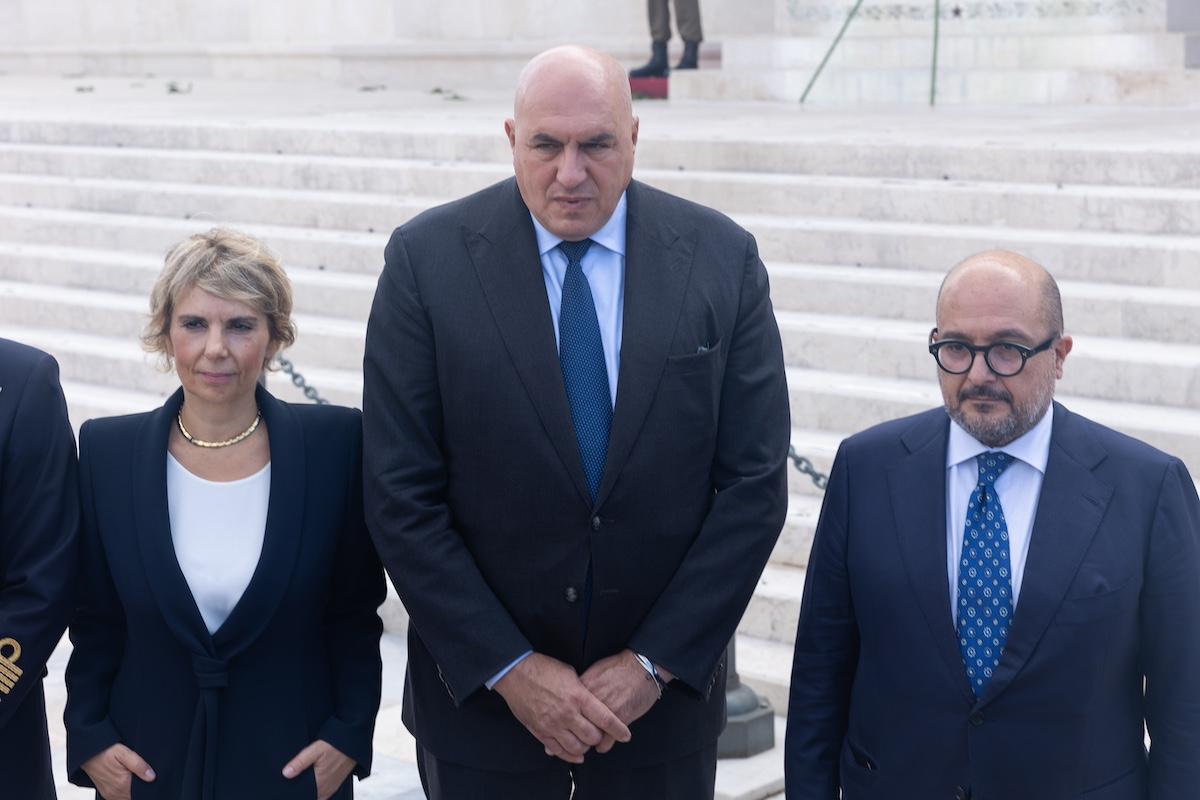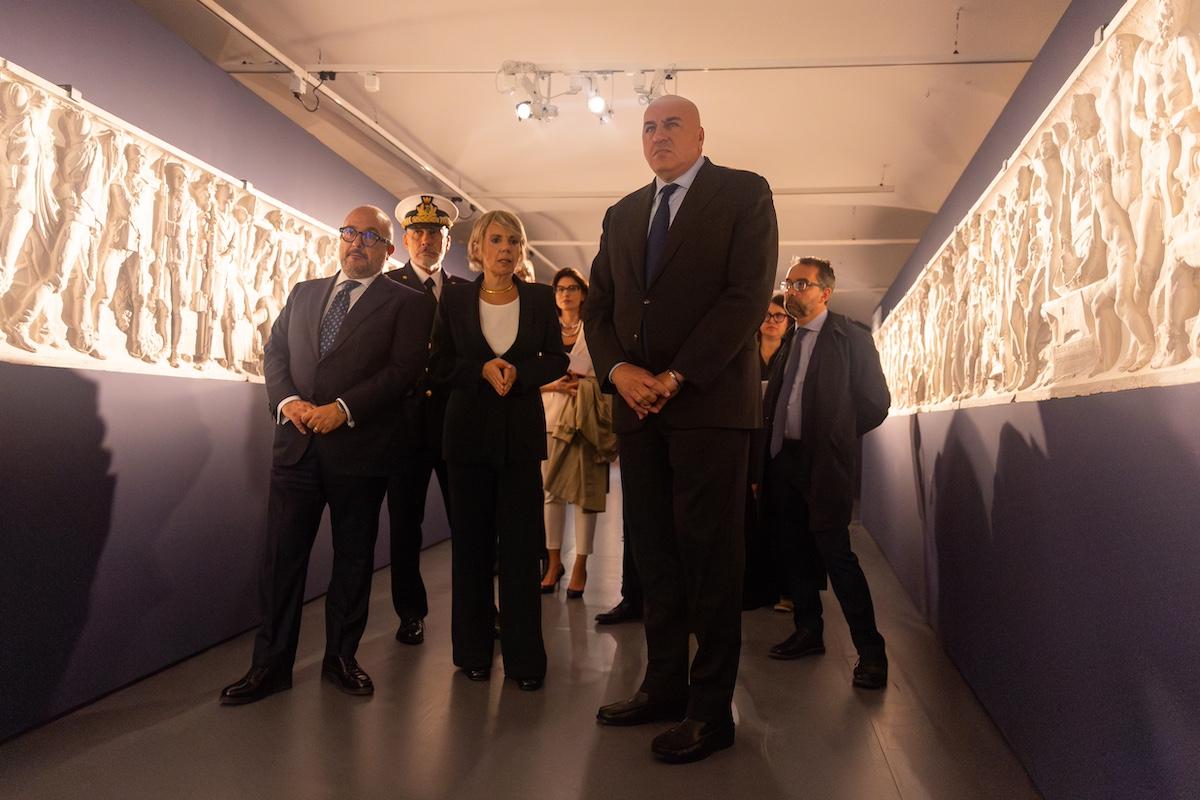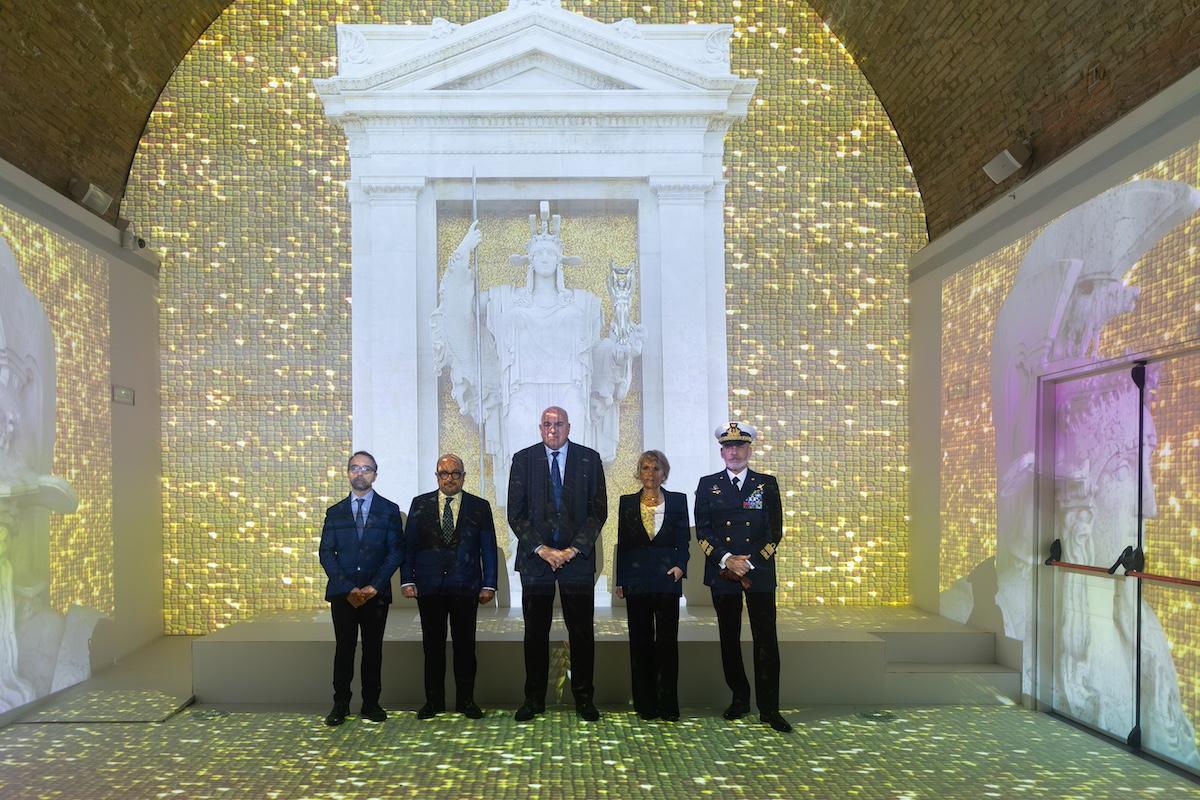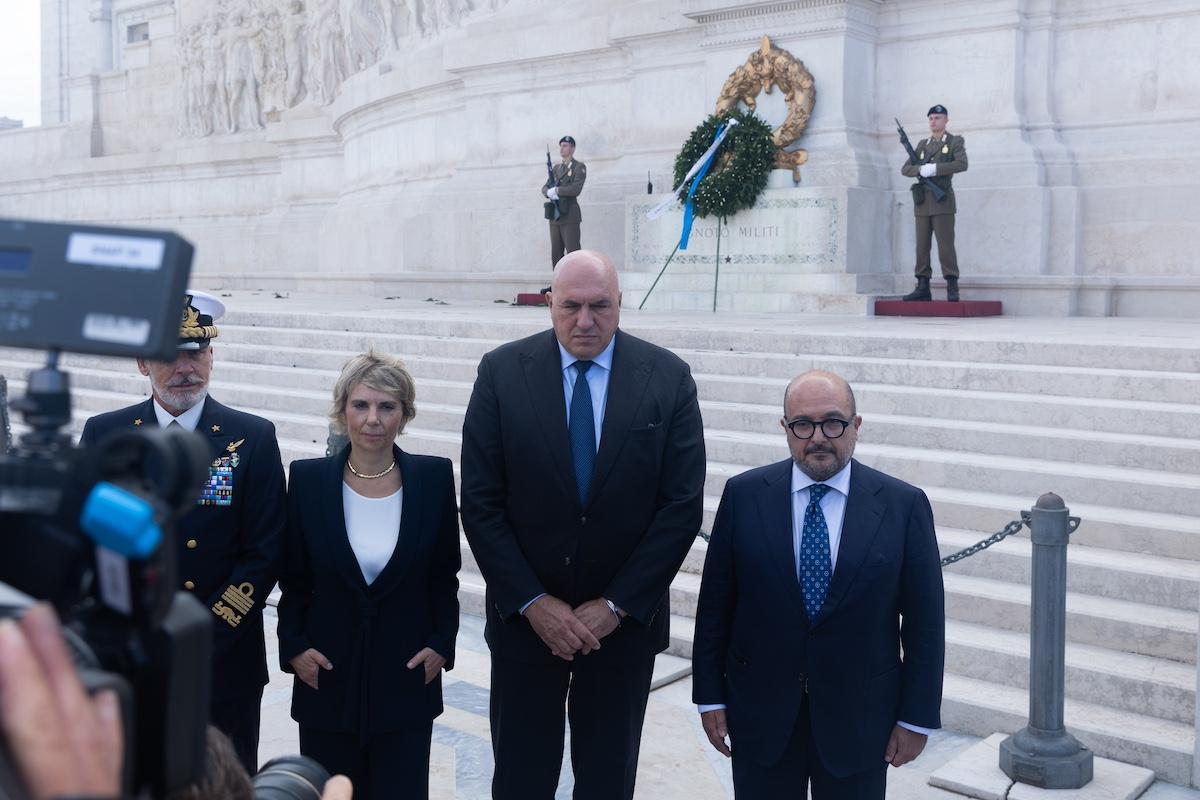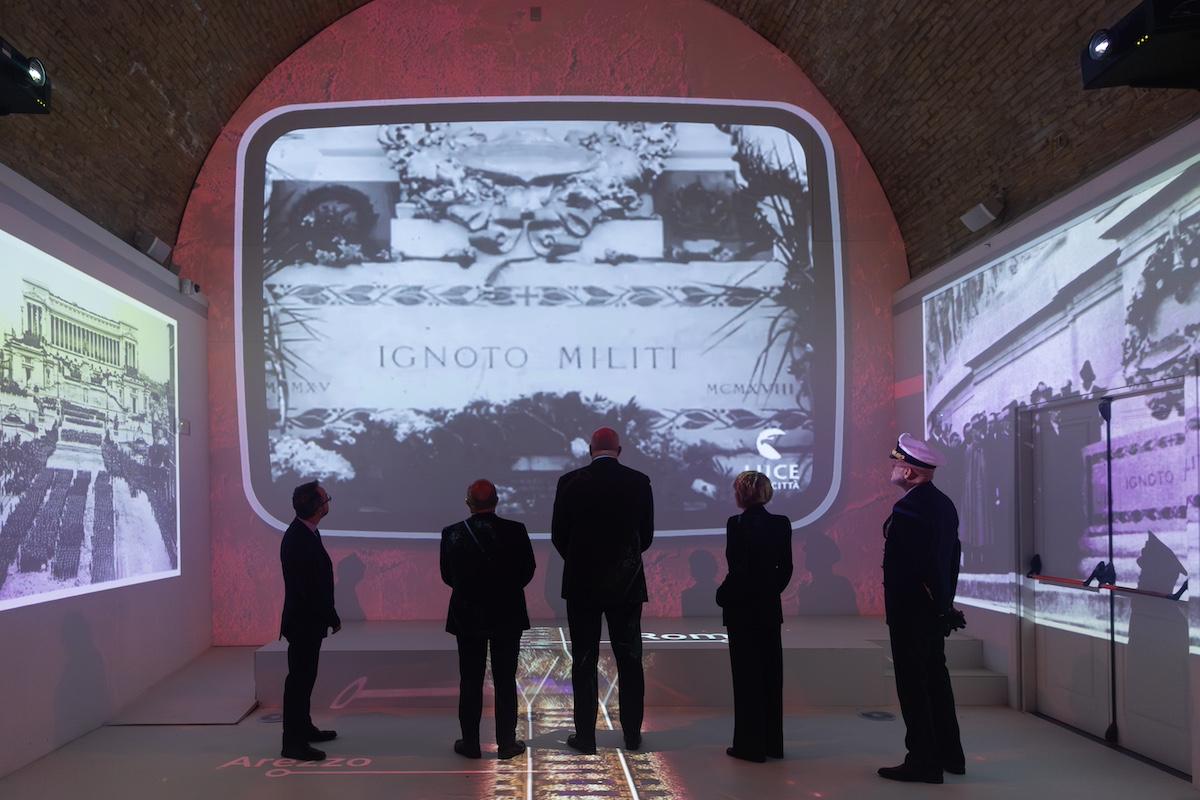Today in Rome, at the Vittoriano, the Minister of Defense, Guido Crosetto, and the Minister of Culture, Gennaro Sangiuliano, previewed the exhibition "Angelo Zanelli and the Altar of the Fatherland". Subsequently, they inaugurated the restoration of the Altar of the Fatherland, including the frieze by Angelo Zanelli.
"The Altar of the Fatherland is a place that, more than any other, represents the national identity and common sentiment of the Italians. My goal is to bring many young people here, so that this becomes a place that belongs to everyone, a place that Italians consider as their 'home,' especially the younger generations" stated the Minister of Culture, Gennaro Sangiuliano.
"The Frieze of Altar of the Fatherland is a piece of our history. It should be studied and known by young people because this part of the monument was created by a boy, by a young man. It is important to make it known because it represents the strength of a young person and how this strength has had an impact on one of the most important monuments for our country" said the Minister of Defense, Guido Crosetto.
The exhibition and restoration are part of a project aimed at the preservation and enhancement of Altar of the Fatherland, conceived and executed by Edith Gabrielli, the director of VIVE - Vittoriano and Palazzo Venezia. The objective is both to rediscover the figure and works of Angelo Zanelli (San Felice di Scovolo, Brescia, 1879 - Rome, 1942) and to share with the public, researchers, citizens, and tourists a symbol of Italy like Altar of the Fatherland, where, perhaps more vividly than anywhere else, the heartbeat of the nation can be heard.
The restoration has ensured the preservation of the material of the frieze of Altar of the Fatherland while simultaneously providing full legibility. Without erasing the signs of the passage of time, the action has strengthened the material and restored the correct visual balance to the whole. Today, one can appreciate the quality of the work in great detail, including the use of various materials for the figure of Roma: both the gold of the mosaic in the background of the niche and the silver of the winged Victory statuette and the spear are clearly visible. The intervention also involved the Tomb of the Unknown Soldier: the cleaning of the marble and the treatment of the bronze crown and eternal flame have restored its full dignity.
The exhibition "Angelo Zanelli and the Altar of the Fatherland," hosted in the Sala Zanardelli at the Vittoriano, curated by Valerio Terraroli, and promoted and organized by VIVE - Vittoriano and Palazzo Venezia in collaboration with the Fondazione Brescia Musei, in agreement with the Archivio Centrale dello Stato, the Soprintendenza speciale di Roma Archeologia Belle Arti e Paesaggio, and the University of Verona, fits into a specific editorial line of VIVE, that of the so-called focus exhibitions: "After Bronze and Gold, this exhibition on Zanelli is the second focus exhibition promoted by VIVE," said Edith Gabrielli. "For a long time, not only Zanelli but all the sculptors active in the Vittoriano have suffered from a lack of critical understanding. The exhibition helps change the perspective on things: it assists visitors and, why not, scholars in getting to know them better. A different and certainly positive picture emerges: we can say that the grand frieze of the Altar of the Fatherland is definitively returned to the public and to critics."
The primary goal of the exhibition is, in fact, to reevaluate the figure of Angelo Zanelli. The artist gained national and international fame thanks to the frieze for the Altar of the Fatherland, as evidenced by numerous commissions for Latin America. However, after his death, his figure fell into oblivion. The exhibition tells the entire career of the Brescian artist, from his beginnings to his entry into the National Artistic Fellowship of the Academy of San Luca in 1903, up to the prestigious commissions of the 1920s and 1930s, highlighting his stylistic changes, from realism to symbolic choices inspired by Viennese secessionist models, to the neo-Michelangelo style of the early 1920s and the 20th-century style of the full 1930s.
Within this context, there is a specific focus on the Altar of the Fatherland. The exhibition allows for a complete overview, cross-referencing the outcomes of documentary research with the new findings from the restoration. The narrative includes the 1908 competition, the popular referendum during the inauguration of the Vittoriano in 1911, which led to Zanelli's definitive victory, the various stages of the frieze's execution, the inclusion of the Tomb of the Unknown Soldier in 1921, and the placement of the statue of the Goddess Roma in 1925.
The exhibition features 57 pieces, including 44 cataloged plaster elements from the Gipsoteca of the Vittoriano that have a connection to the Altar of the Fatherland and its author, also restored for the occasion – a heritage that was almost unknown until a few months ago. Important materials are also on loan from Italian museum institutions and collectors.
In the spirit of VIVE's focus exhibitions, this presentation aims to disseminate the history of the Altar of the Fatherland and the figure of Zanelli to the general public. For this reason, the exhibition offers precise yet easily readable accompanying texts, and at the end of the visit in the Zanardelli Hall, an immersive reality room has been set up: thanks to the power of digital technology, visitors can have an engaging experience by entering both the inauguration ceremony of the Vittoriano in 1911 and the restored Zanelli frieze, through images from Mauro Magliani's photographic campaign.
The exhibition will remain open until February 25, 2024.
For opening hours and all the information, please click here.

